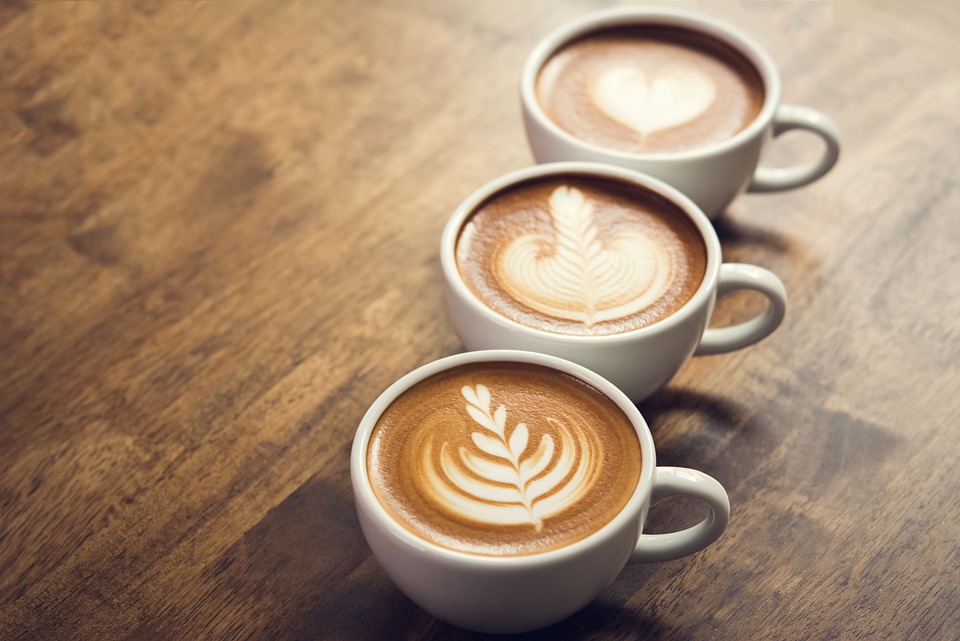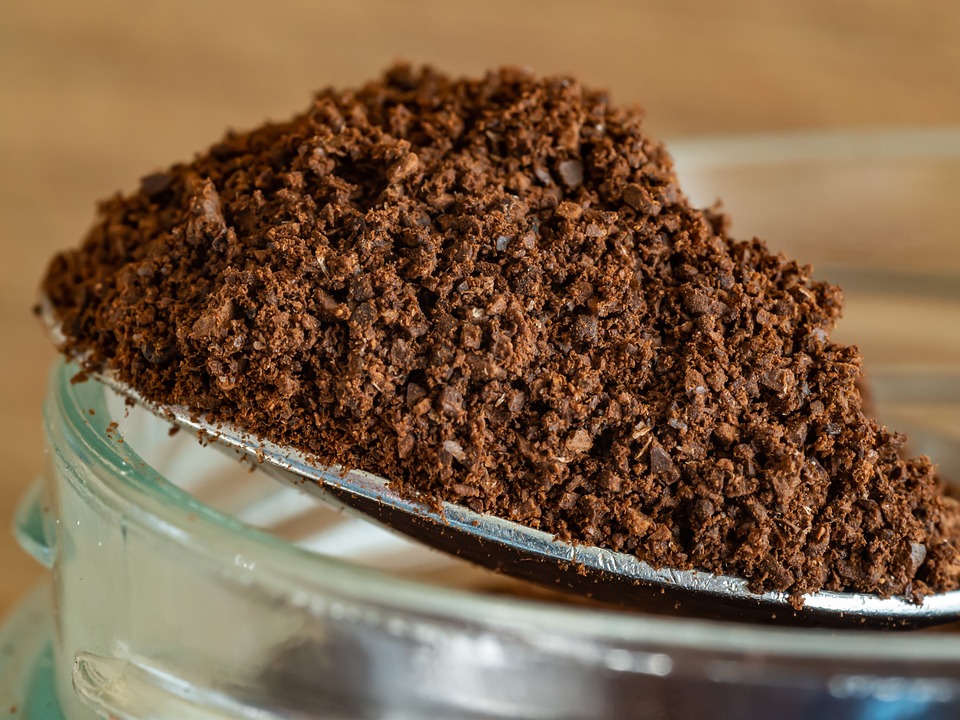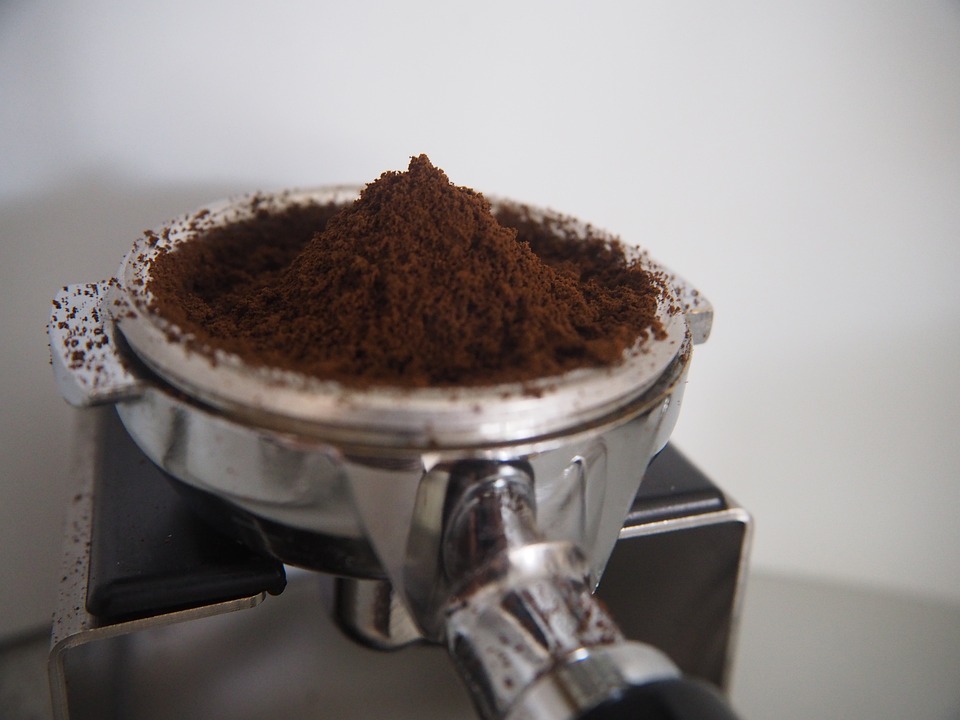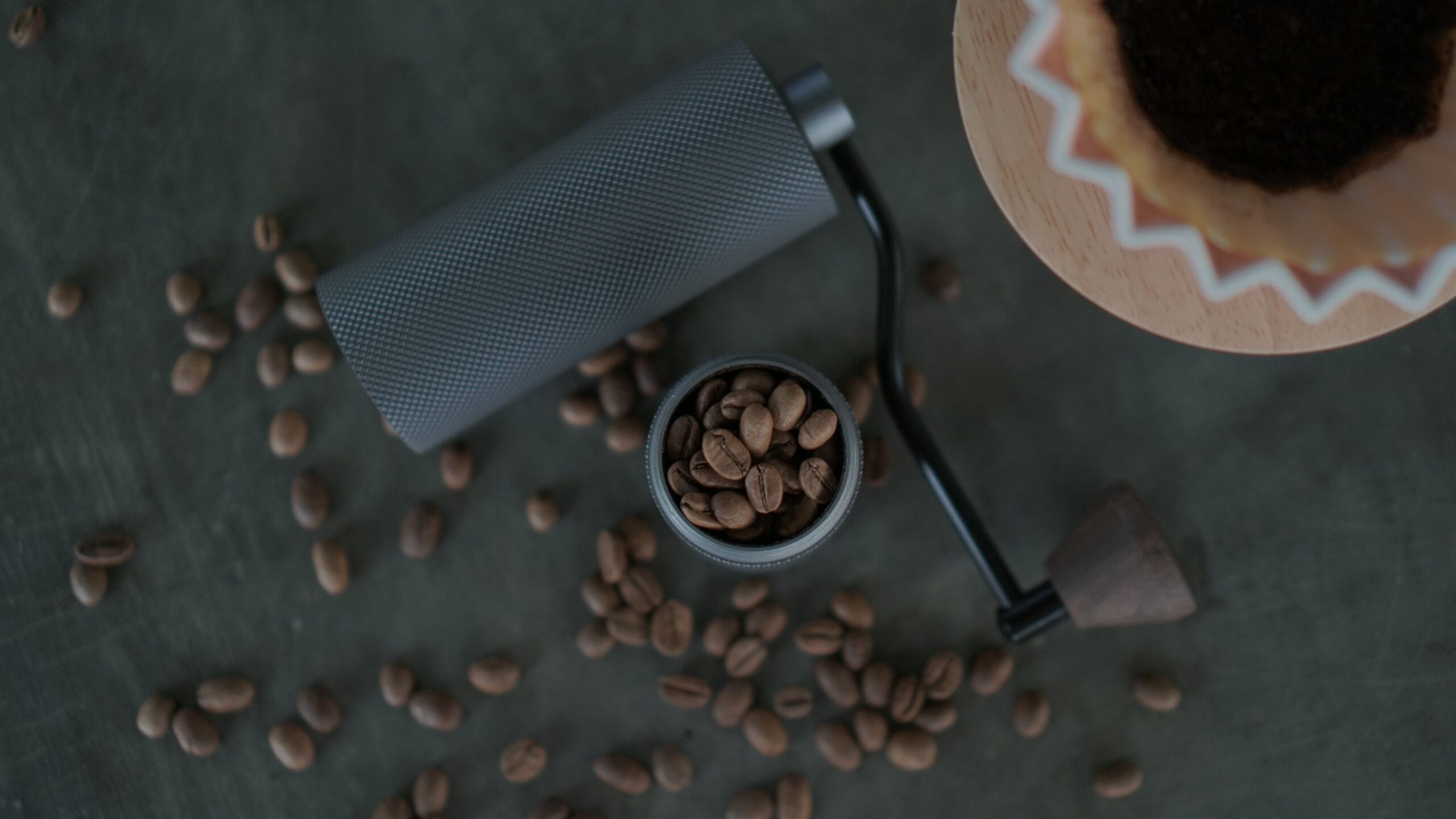Grinding your coffee fresh is the best way to level up your at-home coffee game and take your cups from pretty good to outstandingly, unbelievably, lip-smackingly good. All you really need to unlock most of the benefits of fresh-ground coffee is a good grinder and some whole-bean coffee, but if you want to become a coffee brewing master, you need to break out your lab coat, put on some protective eyewear, and learn about the science of coffee grinding.
Ok, so you don’t actually need to go get your lab coat, but understanding the chemistry behind making a great cup of coffee will help you in your journey to make the best coffee possible. In this guide, I’ll teach you all about the science behind grinding coffee so that you know how to tweak and tune your grind size to get the most out of any bean, even one you’ve never brewed before. It’s the first day of Coffee Grinding 101, and class is in session.

Coffee Grinding Basics
Let’s start with the most basic of basics: why grind coffee at all? On the surface, that sounds like a silly question, but if you think about it, why can’t we just plop some whole coffee beans into hot water to make coffee? The answer is that you can, as long as you don’t mind waiting for several hours or days for your coffee. I don’t recommend it. The resulting cup would be weak and uninspiring and definitely not worth the extra time and effort. But why?
The main benefit you get from grinding coffee beans is increased surface area. If you submerge a whole coffee bean in water, the water only makes contact with the outside of the bean, and It takes time—a lot of time—for water to seep into the bean and start dissolving the compounds inside that give coffee its delicious flavor and heavenly aroma.
However, if you grind the coffee beans up into tiny pieces, a larger fraction of the bean’s total volume is now able to make contact with the water, which speeds up the extraction process and gives you access to flavor compounds that aren’t present in the outer parts of a coffee bean. In light of that information, it’s natural to assume that grinding coffee more finely is better since it would be even faster and extract more flavor, but that’s not the case. To understand why, we need to talk about extraction.
Coffee Grinding and Extraction
Water is really good at dissolving things; so good, in fact, that it’s referred to as the universal solvent. The secret to water’s solvent superpowers is that it’s a polar molecule, which means that one side of a water molecule is positively charged, and the other is negatively charged. That charge disparity makes water attract other charged molecules with enough force to pull them apart from whatever they might be attached to—a coffee bean, for instance—in a process we call dissolution or extraction in coffee parlance.
Several factors determine the amount of extraction that happens when you brew a cup of coffee, including the temperature of the water you use, the amount of time the water is in contact with the coffee grounds, and the grind size. A higher water temperature, longer brew time, and finer grind size all lead to more extraction, which means more flavor but also more bitterness and harsher flavors if you overdo it.
Adjusting your grind size is the best way to control extraction when you’re brewing coffee. Tweaking the water temperature is possible if you have a thermometer—or a kettle with one built in—but most coffee beans taste best when they’re brewed between 195 °F and 205 °F. You could also try to change how much extraction you get by adjusting your total brew time if you’re using an immersion brewing method like French Press, but that’s not an option for other methods like drip or pour over.
Compounds Extracted From Coffee Beans
While I love talking about chemistry, for coffee brewing purposes, all you really need to know is that water is extremely good at extracting compounds from ground coffee beans. What kinds of compounds? Mostly caffeine, chlorogenic acids, organic acids, and various carbohydrates and lipids. Let’s take a look at each, in turn, to understand how these compounds affect how a cup of coffee tastes.
- Caffeine: Every coffee drinker is intimately familiar with caffeine’s stimulatory effects, but they might not realize how much caffeine affects their coffee’s taste and mouthfeel. Coffee with a higher caffeine content has more body and a stronger finish, but it also tastes more bitter than coffee with less caffeine.
- Chlorogenic acids: These acids break down during roasting into a suite of other acids that add to a cup’s bitterness and astringency. Astringency is sometimes called dryness and is what makes your mouth feel sandy and dry when you drink dark roast coffee.
- Organic acids: Organic acids are what give your cup its acidity and brightness. Light roasts tend to have a higher concentration of organic acids than dark roasts since they break down the longer they’re exposed to high temperatures.
- Carbohydrates: If you’ve ever had a cup of coffee that tastes lightly sweet, you’re familiar with the effect that carbohydrates have on a coffee’s flavor—specifically sugars like fructose and glucose.
- Lipids: These fatty compounds affect your coffee’s mouthfeel, giving it a smooth texture and pleasing roundness. In espresso, lipids are responsible for creating the crema, the thin layer of microbubbles that espresso lovers can’t get enough of.

Coffee grinding is about tuning your grind size so that you extract each of the above compounds in the right proportions to make a balanced, flavorful cup. It’s not as complicated as it sounds since you can’t control the extraction of each compound individually, but there are a lot of factors that you need to consider as you try to find the optimal grind size for the particular coffee you’re brewing.
Burr Grinders vs Blade Grinders
The last topic I want to cover before we get into some more advanced ideas is the difference between burr grinders and blade grinders.
Most people start their coffee-grinding career with a blade grinder because they either already have one or can pick one up for cheap from their local department store. The problem is that blade grinders aren’t very good at grinding coffee. In fact, they don’t really grind coffee at all.
To understand why blade grinders aren’t as good as burr grinders, you need to understand how they work. A blade grinder uses a spinning blade to chop coffee up into tiny pieces. It only cuts pieces that happen to fall into the path of the blade, which means that you wind up with tons of differently-sized grounds. The reason that’s a problem is that it makes getting an even extraction much more difficult (more on that in a bit).
Burr grinders, on the other hand, actually grind coffee using a mill rather than haphazardly slice it up with a blade. The part of a burr grinder that actually does the grinding is made up of two burrs, a conical inner burr and a ring-shaped outer burr. When the inner burr spins, it guides the coffee beans towards the outer burr in a way that’s reminiscent of a screw.
When the beans reach the outer burr, they’re forced through a fixed gap in the burrs and get crushed into approximately fixed-size pieces. Of course, all the coffee grounds are not exactly the same size, but the grind size is much more consistent this way.
Besides consistency, the other big benefit of using a burr grinder is that you can adjust the grind size by changing the space between the inner and outer burrs. This gives you way more flexibility to make different types of coffee since different brew styles require different grind sizes to taste good.
Advanced Coffee Grinding: Grind Size Distribution
Now that you’ve dipped your toes in the near-to-but-not-quite-boiling-water, you’re ready to tackle a more advanced topic. The information in the following sections is a little bit more complex, but understanding these details is essential for troubleshooting your brews when they don’t come out just how you want them to.
Grind Size Distribution
All coffee grinders come with settings to help you maintain consistency between brews. These settings are usually unitless numbers like five or thirty, but they typically don’t have anything to do with the actual size of the grinds you’re producing. Unitless numbers are fine, but they can be misleading. When you set your grinder to “six,” it gives the impression that your grinder will produce uniform coffee particles at some fixed size, but that’s not actually how it works.
Even the best, most expensive coffee grinder in the world produces coffee particles with a range or distribution of sizes. That means that when you grind your coffee on a medium setting, you actually get particles that span a range around medium, with some medium-fine and fine particles sneaking in alongside a few medium-coarse and coarse ones.

Having a range of grind sizes is unavoidable—and even desirable for flavor complexity—but you can run into problems if your grinder produces an extremely broad distribution of grind sizes. Unfortunately, measuring your grind size distribution is challenging. The coolest—and nerdiest—way to measure your grinder’s distribution is to use a repurposed piece of software that was originally intended for use in microbiology labs. Technically-minded readers can find a link to the software here.
I’m going to describe a simpler, albeit less accurate, way to assess your grinder’s grind size distribution using sieves.
Measuring Your Grind Size Distribution the Easy Way
The easiest way to assess your grind size distribution is to use a set of coffee sieves, fine mesh filters that only let through coffee particles up to a certain size. By sequentially filtering coffee through finer sieves, you can measure how many particles of each size there are in your grind.
A consistent grinder will produce a grind size distribution with a strong peak between 700 µm and 1,000 µm, depending on whether you’re grinding on a fine setting or a coarse setting. If you notice that you have a lot of grinds of all sizes after you run your coffee through all of the sieves, you’re grinder might be producing too many fines, which will make it taste more bitter and give it less clarity.
The great thing about using sieves is that you can alter your grind size distribution by using the sieves to remove all or some of the fine particles if you need to. I recommend experimenting with this by removing the coffee that makes it through the finest sieve and seeing how it affects your cup. This is a fantastic way to internalize how grind sizes affect coffee.
Practical Tips for Grinding Coffee
“Ok, professor,” I hear you say, “so what? How can I use this information to make better coffee?” I’m glad you asked! Now that you know why you have to grind coffee in the first place, how grind size affects the flavors extracted during the brewing process, and how to assess your grinder’s quality, this final section is going to leverage that newfound knowledge to provide practical advice you can use when you’re actually brewing coffee.
Tweaking Your Grind Size
Adjusting your grind size is one of the easiest ways to change how your coffee tastes by altering the extraction.
Grinding finer increases extraction and extracts more flavor — to a point. If you grind too fine for the brew method you’re using, your coffee will be bitter and harsh. Espresso and Turkish coffee require very fine grind sizes. Aeropress and pour-over can use medium to medium-fine grinds, depending on what beans you’re using and their roast level.

Going in the opposite direction and grinding your coffee more coarsely decreases extraction, which can be helpful for removing bitterness and making your coffee smoother. Grinding too coarse for your brew method, however, will give you a bland, watery, flavorless cup.
Adjustability is a big part of what makes the best grinders better than just okay grinders. If you’re looking for a new grinder that’s easy to get dialed in, check out our guide to the best grinders for home use.
Removing Fines: The Paper Towel Trick
If your coffee comes out muddy and bitter no matter how coarse you set your grinder, it may be because your grinder produces too many fines. You could spring for a better grinder, but the easiest way to instantly make your coffee better is to use the paper towel trick.
After you grind your coffee, spread the grinds out on a paper towel. Try to spread the grinds out enough to make a thin layer, but don’t stress over the specific details. Then pour the grounds into your brewer right from the paper towel by making a little chute. You should notice that a lot of the finer dust-like particles remain stuck to the paper towel.
The paper towel trick can greatly improve your coffee by removing excess fines from your brew, but it’s not a precise tool. Using sieves is a more refined version of the paper towel trick, but the best answer is to invest in a better grinder.
Wrapping Up
I think that’s enough for now. Grinding coffee is surprisingly complicated when you get into how it works, and what I’ve covered in this article is enough to understand how important it is to have a high-quality grinder if you want to make tasty coffee at home.
Be sure to check out our other articles for more tips about coffee grinding, brewing, and more!
FAQ
Here are some questions I hear all the time about coffee grinders and grinding coffee at home.
Do I need a coffee grinder to make good coffee?
In my opinion, yes, you do. Fresh-ground coffee tastes significantly better than pre-ground coffee, all else being equal. Pre-ground coffee starts oxidizing and going bad as soon as it hits the air, losing flavor and becoming more bitter with time. If you wouldn’t make a sandwich and let it sit out on the counter for a week before you eat it, you shouldn’t use pre-ground coffee.
What’s the best coffee grinder?
There is no single best coffee grinder since different grinders excel at grinding beans for making different kinds of coffee. The Baratza Encore is the best entry-level all-around grinder for making French press and pour-over, but it’s not as good as its big brother, the Baratza Virtuoso, and neither is good for making espresso. The bottom line is you need to choose a grinder that suits the type of coffee you drink. Check out our in-depth grinder buying guide for more info.
What’s a good coffee grinder on a budget?
I like the Baratza Encore as a budget-friendly coffee grinder, but it doesn’t meet everyone’s criteria for being affordable. Hario makes a manual grinder called the Coffee Mill that is affordable, but it is fairly inconsistent and struggles at both ends of the grind spectrum.


